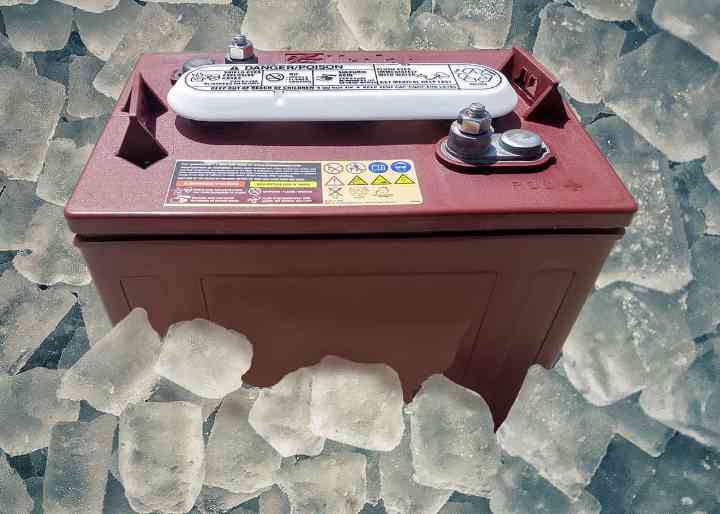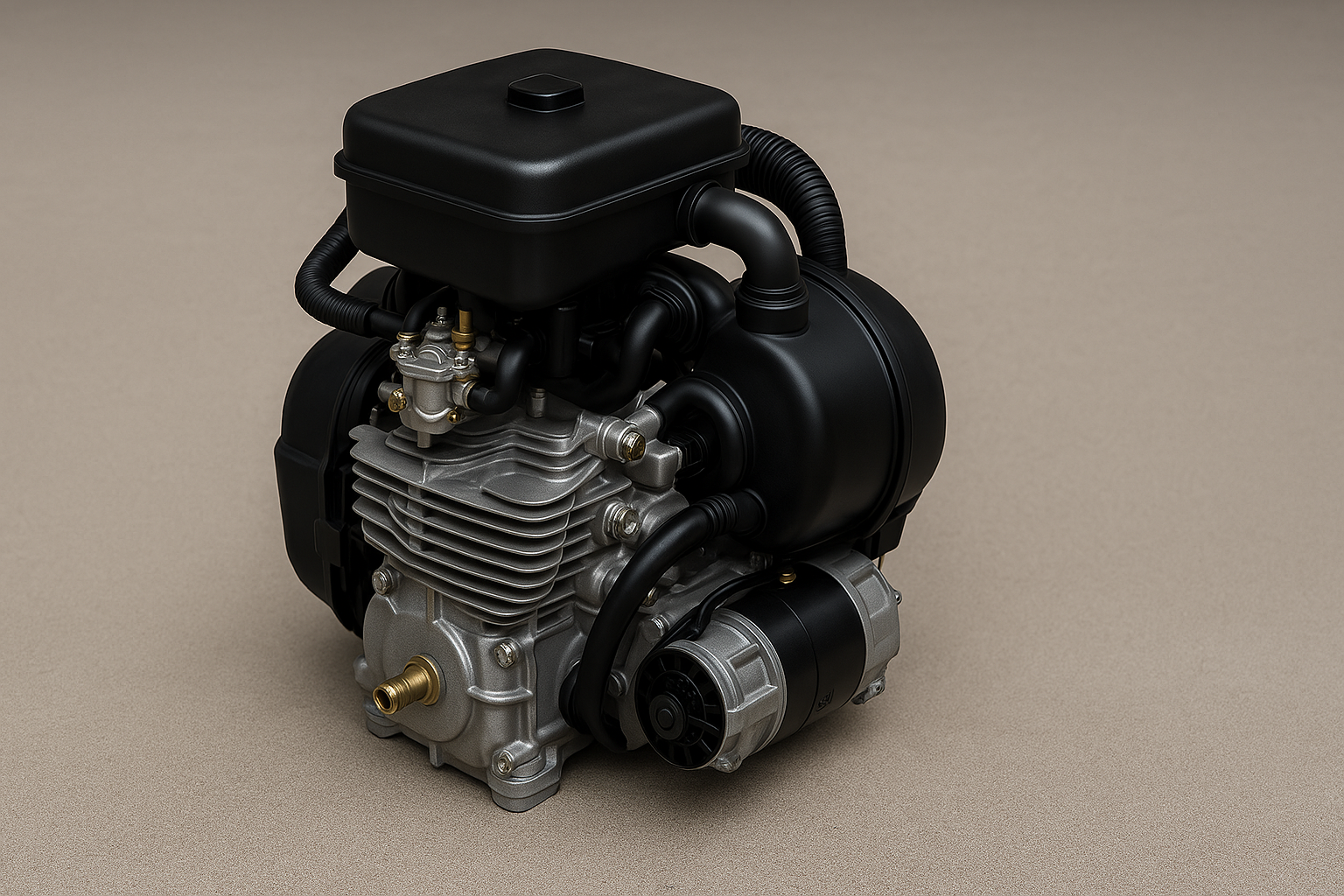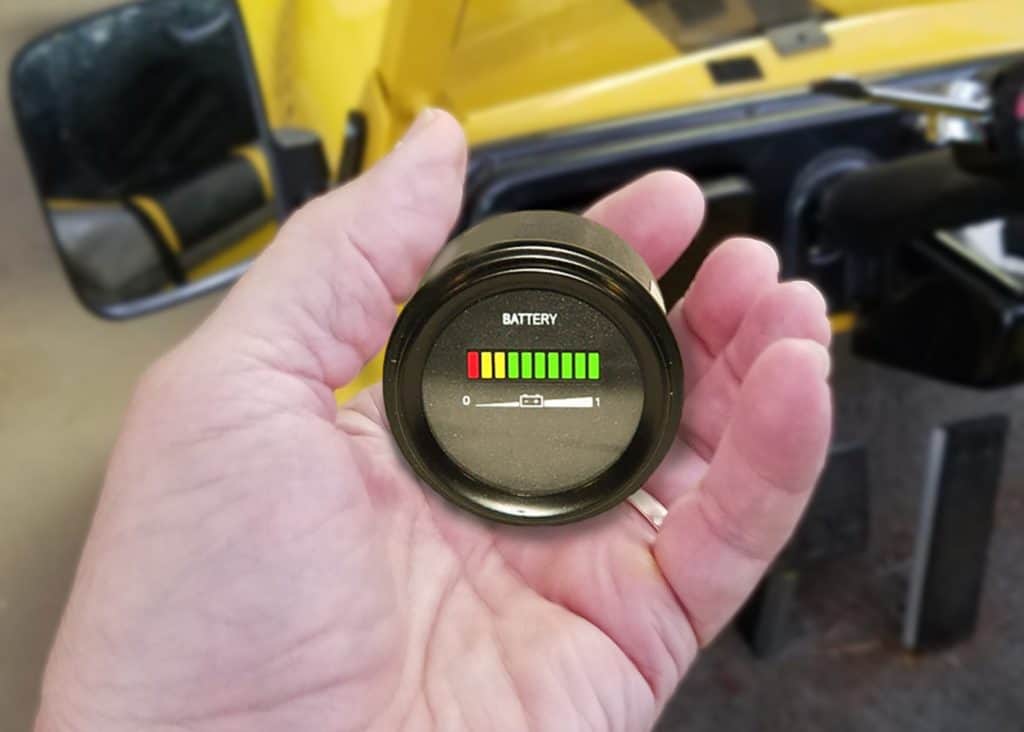Winter is coming, and your electric golf cart will need special attention to keep it ready for the next Spring round of golf, but taking the proper steps to protect the batteries with Winter storage is vital. Deep-cycle batteries are expensive to replace whether you have an electric golf cart or just a starting battery for a gas golf cart.
Can golf cart batteries freeze?
Yes, if not charged, golf cart batteries can freeze, and once they have frozen, it is difficult to get them to recover. The more the battery is charged, the lower the temperature must be to freeze it. Here are some tips for storing your golf cart batteries over the winter.
At What Temperature Do Golf Cart Batteries Freeze?
An uncharged battery has a much higher freeze point than a charged battery. A fully charged battery has a freezing point around -80 °F while a discharged battery has a freezing point around 20 °F. Electrolyte expansion during cold weather can crack the battery case, causing complete battery failure.
At a 40% state of charge, the electrolyte will freeze. As the state of charge in a battery decreases, the electrolyte solution gets to be more and more like water.
What Do You Do With Golf Cart Batteries In The Winter?
Storing golf cart batteries in a discharged state in cold temperatures is among the most typical mistakes made during the winter. Battery maintenance can be a simple and effective chore in any season of the year.
Also, golf cart batteries will take longer to charge in colder temperatures than they will in warm weather. At higher temperatures (above 80º F ) battery capacity usually increases, but this shortens battery life.
An easy-to-remember rule is for every 15º F above 80º F, battery capacity is increased by 10%, and for every 15º F below 80º F, battery capacity is reduced by 10%.
Should I Leave My Golf Cart Plugged In All The Time?
You can leave your golf cart plugged in all the time as long as the charger is an automatic unit that comes on when the charge level drops. Batteries naturally self-discharge, and if you cannot bring your golf cart inside, then you are left with two options: Monitor the state of charge on the batteries during colder temperatures, or disconnect them and bring them into the garage.
Older chargers that do not cut off when the batteries reach full charge might boil the batteries and cause damage.
Check your battery charger’s status at least every 30 days. On an electric golf cart, always leave the Tow/Run switch on “Tow”.
How Often Should I Charge My Golf Cart Batteries?
Charge cycle your golf cart batteries often and whenever you can. Remember that a Lead-Acid battery doesn’t get a “memory” and it hurts nothing to top off the charge frequently. After the battery charger has your battery pack fully charged, check the water levels again and replenish with distilled water.
What To Do If Your Battery Does Freeze.
A frozen battery is nearly impossible to revive, but there is something you can try.
First, bring the battery inside and thaw it out, then hook it to an automotive charger that is equipped with clamps to put on the terminals. Set the charger on the lowest charge rate setting and charge the battery for around an hour.
Disconnect the battery and let it rest for half an hour. Hook it back up and cycle for another hour. Repeat the process several times, checking the voltage between each attempt with a voltmeter.
If you are having any success with reviving it, the charge should read a little higher voltage each time you measure. Keep repeating the process until the battery reaches and holds the full voltage.
Winterizing Your Golf Cart Batteries.
You should always have a winter storage plan for your golf cart, and keep a record of when you perform each task. Make sure you keep this record updated.
- Batteries need to be dry and cleaned of any corrosion and dirt. Batteries can self-discharge by a small trickle of current slowly discharging your batteries through conductive debris.
- Fill all of the battery cells to the proper levels. Remove the battery tops and use distilled water to raise the water levels in the battery cells to cover the plates. Electrolyte levels in your golf cart batteries are critical, especially when cold weather hits and you need to maintain a full charge to prevent damage from freezing temperatures. ALWAYS use distilled water, because tap water has impurities that will collect on the plates while the cart is in winter storage.
- When your golf cart batteries are removed and taken inside, place them on a non-conductive surface. Placing them on the ground or bare concrete can cause self-discharging. Place the fully charged batteries on a board or wood pallet, and connect them in series for use with your 36/48 volt charger. Store them in a cool area. Batteries will discharge at slower discharge rates in cooler temperatures. The cooler the storage temperature, the less the standard loss discharge.
- Clean and tighten all the terminal and post connections. This will ensure the charger can get the maximum connectivity and charge effectively.
- Periodically check the charge status. Don’t assume that your charger is handling it all automatically. A newer Club Car battery charger has the ability to shut off when the pack is done charging. This prevents your battery water from boiling away and exposing the plates.
- If your charger is not an auto-on/off, do not leave the charger plugged into the golf cart. Once the batteries are fully charged, unplug the charger from the wall and from the golf cart.
- Turn the key switch to the OFF position. Leave the Forward/Reverse switch in the neutral position during storage. The Tow/Run switch is only installed on a golf car with a separately excited motor that produces regenerative braking. This uses a small amount of power even when the key is off and can take a full charge If your cart has this switch, Set it to “Tow” and set the parking brake.






Leave a Reply